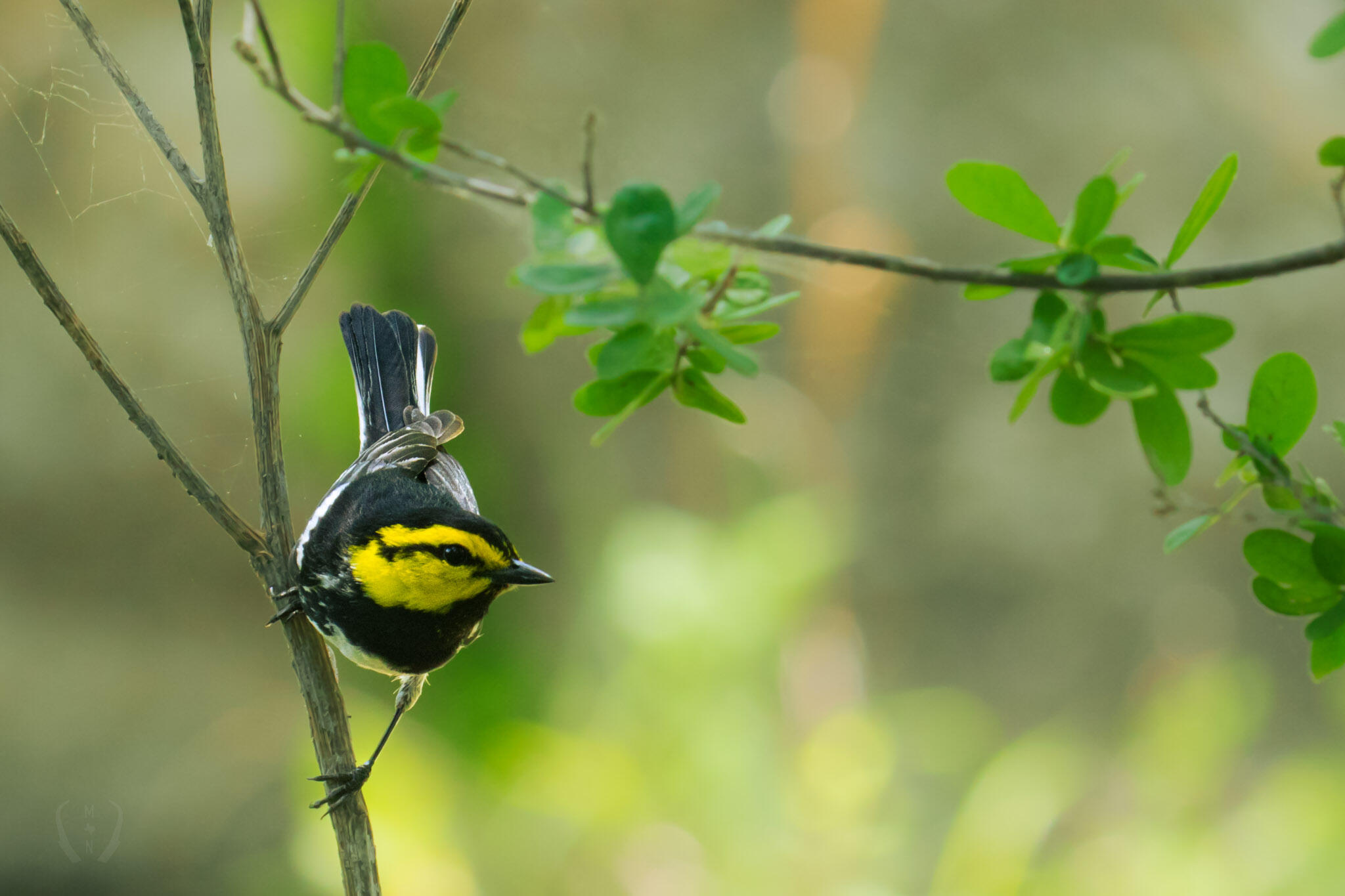by Dr. Tim Forrester, Audubon Texas Coastal Avian Biologist
Anyone who lives in or has visited Texas knows that it is a unique and special place. People from all over the world come here to experience the many unique landscapes, culture, recreational activities, and of course the flora and fauna. Texas is particularly renowned for birdwatching with over 600 bird species, many of which are found nowhere else in the country. Although Texas has many beautiful birds, one songbird, the Golden-cheeked Warbler, has a particularly special status amongst the hearts and minds of all those who appreciate the biodiversity of Texas.
The Golden-cheeked Warbler is a beautiful small songbird whose bright golden face and happy, buzzy song lights up the Texas hill country during the spring and summer. The Golden-cheeked Warbler has the unique status of being the only bird species on earth to be a true Texan, meaning that every single one is hatched and raised in Texas. In fact, the Warbler’s nesting range encompasses only 33 counties in central Texas. Texan birders eagerly await the warbler’s return from its Central American wintering grounds each year.
In addition to being beloved by locals, the Golden-cheeked Warbler is a major driver of tourism in Texas. Thousands of birdwatching tourists flock to central Texas each year (bringing economic benefits to the region) to witness this stunning little jewel belting out its song in the rugged hill country. Before I moved to Texas, this bird was at the top of my list of birds that I most wanted to see. Like so many other birdwatchers from Texas and beyond, I planned a multi-day trip to the hill country specifically to find and enjoy this tiny golden jewel. As proud and neighborly Texans, we have a duty to protect what makes Texas so special. Protecting the Golden-cheeked Warbler and its habitat is a critical step in preserving this unique Texas biodiversity.
An important aspect of the biology of the Golden-cheeked Warbler which puts its population at risk is the fact that it nests almost exclusively in Ashe Juniper trees (also known colloquially as Mountain Cedar). The warblers forage in these trees and use their bark to build their nests. Warblers prefer to nest in large woodland patches with a high density of older (e.g., at least 40 years old) Ashe Junipers and few other tree species.
Ashe Junipers provide not only breeding and foraging habitat for Golden-cheeked Warblers, but also a refuge from predators. Texas Rat Snakes are a frequent predator of warbler eggs and fledglings. Because junipers tend to lack cavities where the snakes can retreat to rest and digest prey, the snakes occur less often in junipers than in deciduous trees. This, as well as the dense nature of junipers which provides hiding places, is likely why warbler fledglings have higher survival in Ashe Junipers than in other trees. Large patches of juniper are also associated with higher nest survival and production of young for Golden-cheeked Warblers. In short, the Ashe Juniper woodlands of central Texas are essential for the survival of Golden-cheeked Warblers. This special Texan bird can reproduce nowhere else.
Now, House Bill 3798 and Senate Bill 1927 threaten the viability of Golden-cheeked Warbler populations by making it easier to remove Ashe Junipers. Even with the protection afforded by the Endangered Species Act, the amount of suitable habitat for Golden-cheeked Warblers has declined drastically in recent decades. Key areas of the warbler’s breeding range occur in counties with some of the fastest growing human populations in Texas. Because of this population growth and development, one study found that breeding habitat of the warbler was reduced by 45% from 1985 – 2018, and that critically, only 10% of the species’ most suitable habitat occurs in protected areas. With 90% of breeding habitat occurring on private land and large protected areas being rare, conservation and management of smaller Ashe Juniper patches on private land are required for maintaining the warbler population. Another study found a stunning 29% decrease in total breeding habitat just between 2000 and 2010. House Bill 3798 and Senate Bill 1927 would only accelerate this pace of habitat destruction and further threaten the warbler with population declines. Now more than ever, the Golden-cheeked Warbler and its Ashe Juniper habitat needs help and protection and opposing harmful bills is a critical part of that protection.
I hope you get a chance to hear the cheerful song of the Golden-cheeked Warbler this spring and take a moment to welcome home a fellow Texan.





